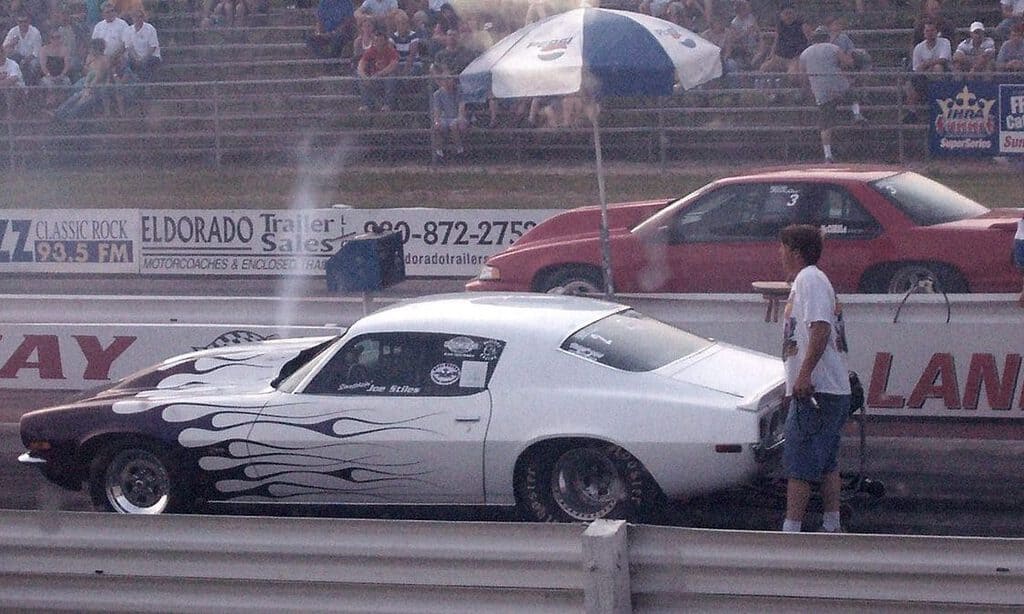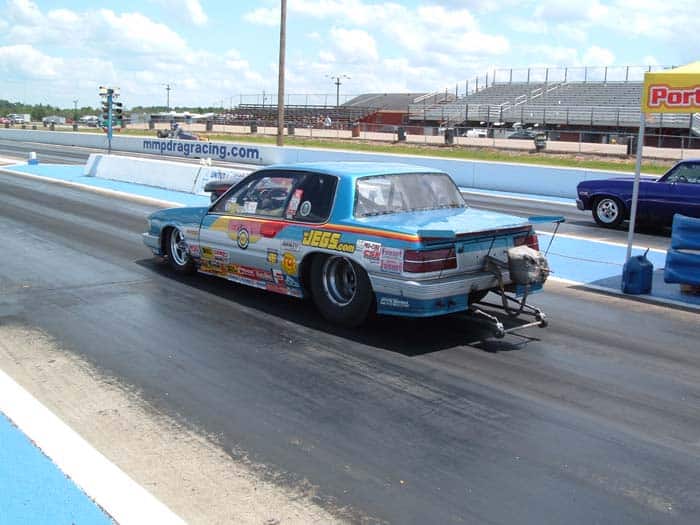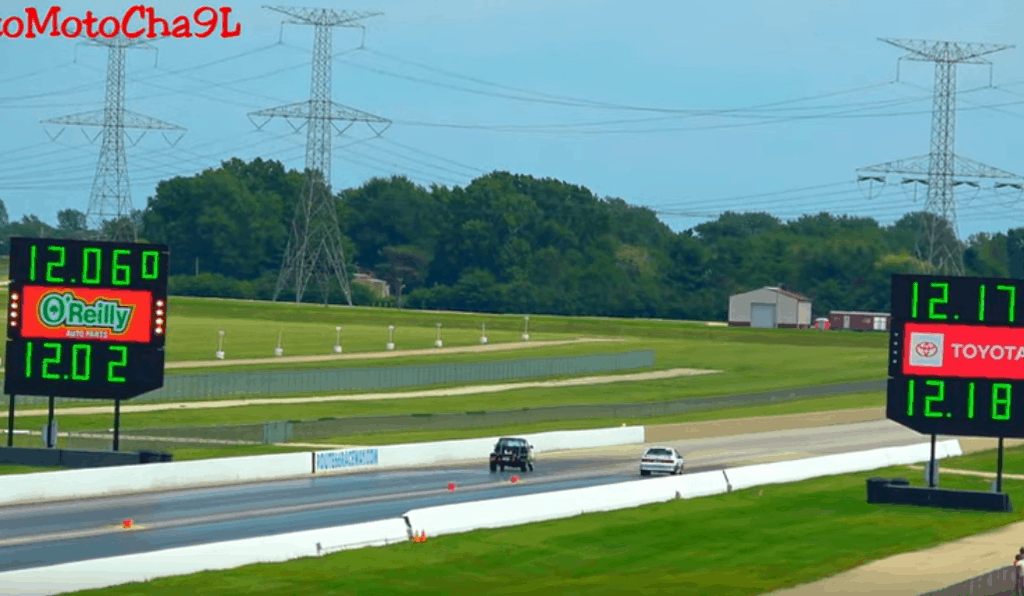We all love raw power and out-and-out speed, right? There’s nothing like watching top-end, highly-tuned cars with the most skilled drivers competing against each other. But a far more accessible version of drag racing exists: bracket racing. So just exactly what is bracket racing? Let’s look.
The basics
We can start at the beginning and talk about drag racing as a whole and before we look at how bracket racing fits into it.
Drag racing, at the most basic level, is an acceleration race between two cars driving in a straight line, most commonly on ¼-mile or ⅛-mile tracks, but also increasingly on 1000ft tracks.
The premise is simple: when the race starts, the idea is to be the first one across the finishing line at the other end of the track.
To win a drag race, you need a certain skill set that includes quick reactions, shifting abilities, overall control of the car etc. But along with this, to compete, you also need a powerful car.
Not everybody can afford the expense of a car capable of competing in these kinds of speed races, and this is where bracket racing comes in.
Bracket racing – the great leveler
Bracket racing is a form of drag racing that gives a handicap to one of the cars in the race, leveling the playing field and allowing just about any vehicles to compete against each other in a fair race.
This makes the sport much more accessible to amateur racers since you can literally turn up and race in your family sedan – before driving it back home after the race meeting!
This is because, in these races, the objective is not simply to go as fast as possible but rather to aim for consistency. Before the race, drivers try to predict the time it will take them to complete the course and then attempt to drive as close to this predicted time as possible.
In this type of race, a whole range of skills are brought into play, including driving skills, mechanical skills and a good awareness of the car’s and one’s own abilities – but the advantage of having the best or most expensive machines is removed from the equation.
Now let’s have a look at some of the details of how it all works.
“Dialing in”
Before a race, the driver of each car is required to estimate the time it will take to reach the finish line. This is known as the “elapsed time”, or “E.T.” for short (bracket racing is also sometimes known as “E.T. racing”). Estimating the time is called “dialing in”.
For a rookie amateur, this will be a best guess after doing a couple of practice runs; for seasoned veterans who have raced hundreds of times and know their car inside out, this will be a very precise judgement. They know they can come extremely close to hitting this time in every race.
The dialed-in time is displayed in the window of the car, and the driver’s objective is then to come as close to this time as possible without exceeding it.
The handicap
The dialed-in time is what is used to give the faster car a handicap and make the race fair; the difference between the two dialed-in times is used to calculate the amount of head start the slower car receives.
For example, if Car A (the faster car) dials in at 13.0 seconds (i.e. the driver says the car will finish the race in 13.0 seconds) and Car B (the slower car) dials in at 14.0 seconds, Car B will start the race one second before Car A.
This means, with all other things being equal, if both cars finish the race with exactly the time they predicted, they will both cross the finish line at exactly the same time – although, in practice, this almost never happens. Now let’s look at some more details.
Winning the race
Given the handicap created by the dialing in the system, the car that crosses the finishing line first should win the race. However, it isn’t quite as simple as that.
When dialing in, a driver is giving an estimated E.T. for the race, and the idea is to finish as close to that time as possible.
However, the dialed-in time also acts as a limit. Any car running a faster time than the dialed-in time is said to “break out”; if a car breaks out, assuming the other car doesn’t also break out or commit any other fouls, the car that didn’t break out wins the race.
Let’s take our previous example again. Car A dialed in at 13.0 seconds – for this car, a time of 13.01 would be considered a very good result, but a time of 12.99 would mean the car had broken out.
If Car A ran 12.99 seconds and Car B ran 15.0 seconds, Car B would still win despite this very slow time because Car A broke out, i.e. ran faster than the dialed-in time.
This is why judging the dialing in time and then being able to consistently hit that time without going any faster is the key to bracket racing.
Reaction time
There is another vital skill in bracket racing that we have already alluded to: reaction time.
Drag races are started by a special system of lights known as the Christmas tree. We don’t need to go into the details of how the Christmas tree works here, but in simple terms, the lights count down the start of the race and tell the drivers when to go.
When the start of the race is signaled, the time it takes a driver to react can also have a big impact on the result of the race. Let’s take another example to explain why.
Taking the same two cars we talked about before, imagine a hypothetical situation where both racers drive a perfect race and both hit the 13.0-second and 14.0-second times they dialed in at the start of the race (this is all but impossible in reality, but this is just an example).
If both drivers started at exactly the same time, the race would be a dead heat. However, imagine now that Driver B reacted to the lights 0.25 seconds quicker than driver A.
With all other things being equal, Driver B would cross the finish line 0.25 seconds before driver A and would therefore win the race. This is why reaction time, along with accurate dial-in times and driver consistency, is another of the key aspects of drag racing.
Accessible racing for anyone with a car
What we’ve covered here are the basics of bracket racing, although of course there’s a lot more to it than just this. However, what bracket racing offers is an accessible form of racing to just about anyone who has a car – so if you feel inspired, simply head down to your local track and give it a go!


